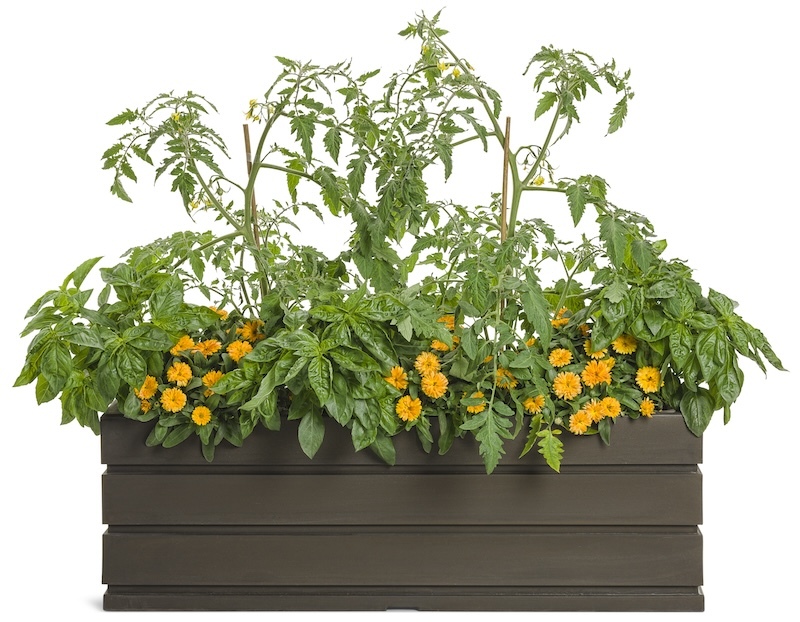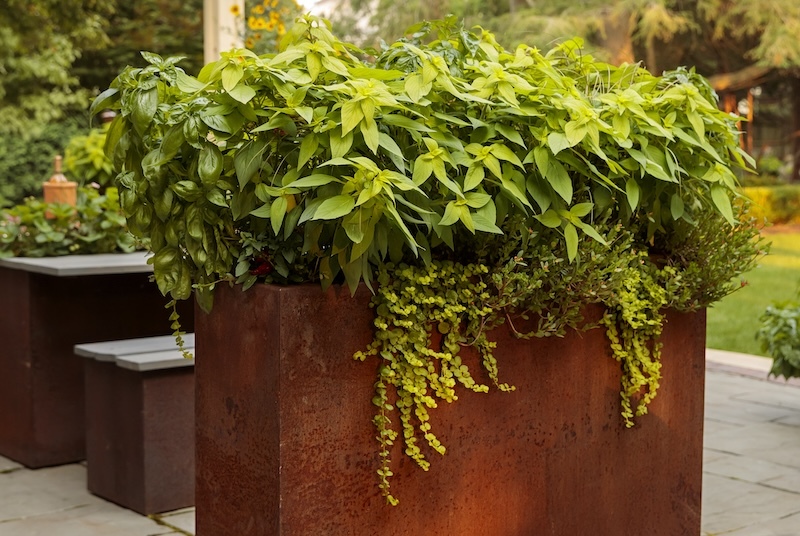Annual herbs are often grown for their food value without considering their ornamental qualities, which could give your garden borders and planters a fresh look. Basil is both very edible and highly ornamental with a broad range of leaf shapes, colors, and even flower colors. Large varieties can help fill empty spots left by early spring bulbs or perennials and provide fresh leaves all summer long. Bouquets of late summer flowers take on a new look when purple or other dark-leaved basil is added.

All varieties of basil prefer full sun and well-drained soil with plenty of rich compost mixed in. Although basil is grown as a tender perennial in USDA zones 10a-11b, most gardeners grow it as an annual. All basil varieties maintain the best growth and coloring with consistently moist soil and regular fertilizing. An organic, diluted liquid feed applied every 1-2 weeks is ideal.
Shrubs To Plant With Basil
Shrubs and basil are not often planted together as part of a mixed garden bed. Basil usually needs more moist and fertile soil than shrubs. Trying to keep both plants happy can result in a high-maintenance landscape that does not remain viable longer than a season or two.
Perennials To Plant With Basil
Perennials are much easier to grow alongside basil. Many like consistently moist soil, full sun and several feedings during the growing season. For a beautiful and tasty combination, plant basil with strawberries and asparagus in a raised bed or planter. Perennial herbs like oregano, comfrey, and chives are other kitchen garden staples to grow with basil. In a cottage garden, purple-leaved basil can add deep color and an interesting leaf texture to a mixed planting with peonies, ornamental grasses, euphorbias, and dahlias.

Annuals To Plant With Basil
Add basil to any annual vegetable bed for instant color. Well-known veggie companions for basil include tomatoes, peppers, and eggplants, although basil also grows well with lettuce, radish, cucumbers, and any other salad crop that needs consistent watering. For flowers, nasturtium, calendula, sweet alyssum, and cosmos look great alongside basil, adding another layer of season-long color to a pollinator bed or garden design.
Best Companion Plants For Basil in Containers
Basil grows well in containers with other plants and is often used as a filler. For an edible arrangement, combine basil with pineapple sage and ornamental peppers, which provide height. Allow creeping Jenny to spill over sides to soften the edges of the planter and provide color.
Regular watering and fertilizing are needed for seasonal planters with basil to keep them looking their best throughout the season. Use a liquid fertilizer diluted to half the recommended dose once a week from early summer to the first frost in fall.

Plants Not To Grow With Basil
Basil grows well with most plants, but there are three companions that should be avoided: fennel, rue, and culinary sage. These three herbs can change basil’s sweet, slightly anise, cinnamon flavor and lead to bitterness when grown near basil in a planter or raised bed. Sage and fennel also prefer different growing conditions than basil. Basil prefers more moisture and fertilizing than sage and fennel and will sulk if these conditions are not met.
Best Plants To Grow With Basil
Basil grows best in well-drained soil kept consistently moist. Other shallow-rooted annuals and perennials also prefer these conditions and make the best growing companions. When basil blooms, pollinators and even hummingbirds come to feed, which benefits nearby crops. Basil can be placed anywhere in the garden to attract beneficial insects and enhance the floral display. Shorter growing or prostrate types of basil are great for a temporary but interesting border in a sunny garden bed.
